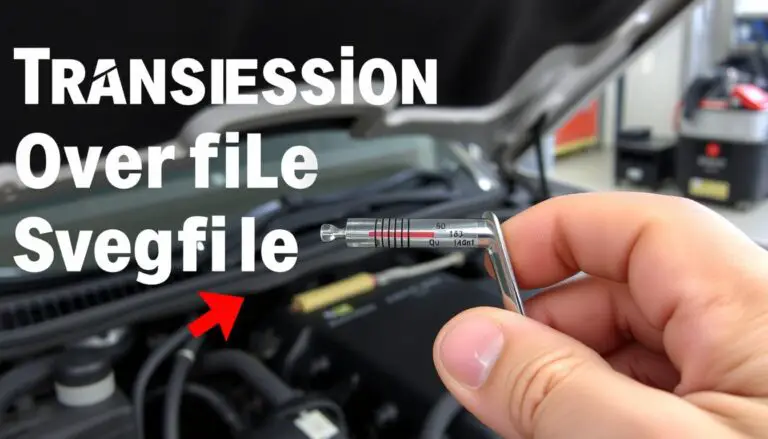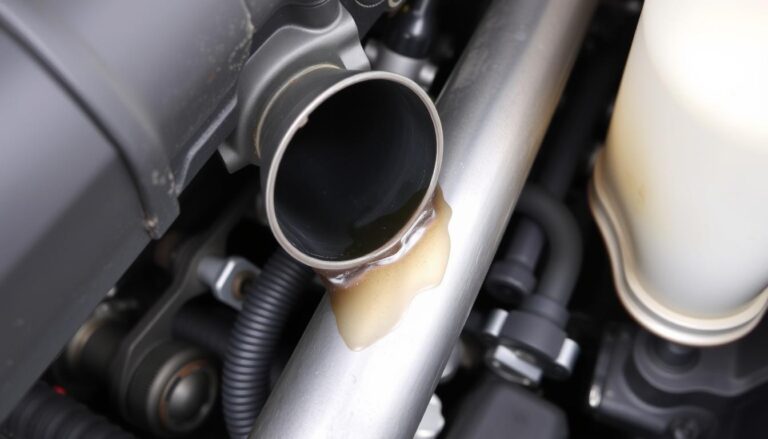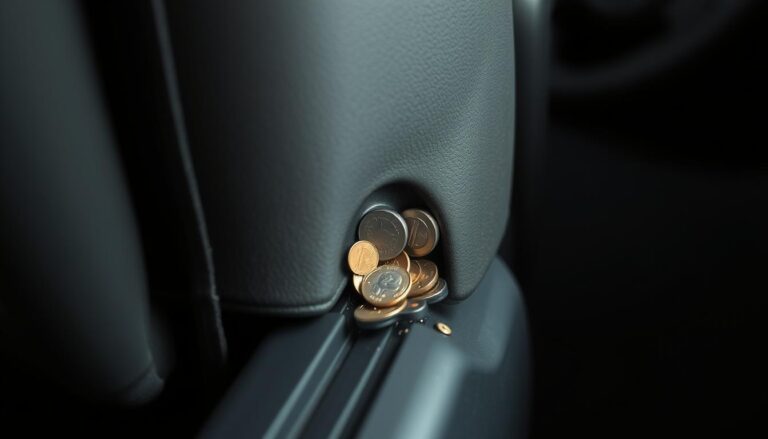The wheel bearing is pivotal for the vehicle’s performance and safety. Its failure precipitates a cascade of problems, from uneven tire wear to the perilous loss of vehicular control. This underscores the critical need for prompt attention to any signs of malfunction.
Operating a vehicle with a defective wheel bearing can manifest in erratic handling, notably during turns or braking maneuvers. Authorities warn that neglecting such a fault can escalate into further damage to the hub assembly and suspension system. For a comprehensive exploration of the hazards posed by a malfunctioning wheel bearing, refer to Extreme Auto Repair.
Key Takeaways
- A bad wheel bearing can cause uneven tire wear and increase rolling resistance.
- Ignoring a faulty wheel bearing can lead to more severe damage to other vehicle components.
- A failing wheel bearing can result in unpredictable handling and loss of control.
- Wheel bearing failure can leave you stranded with a potentially detached wheel.
- Regular maintenance is crucial to extend the lifespan of your wheel bearings.
What Are Wheel Bearings and Why Are They Important?
The significance of wheel bearings in preserving your vehicle’s integrity cannot be overstated. These components are indispensable, facilitating the wheels’ smooth rotation and efficient movement. They are engineered to bear the vehicle’s weight and endure the rigors of diverse driving scenarios.
Wheel bearings are fundamental to your vehicle’s operational efficacy. They enable the wheels to rotate, allowing for forward, backward, and lateral movement. A wheel bearing in optimal condition minimizes friction, thus enhancing vehicle performance and fuel economy.
The Function of Wheel Bearings in Your Vehicle
Primarily, wheel bearings are tasked with supporting the vehicle’s load and ensuring smooth wheel rotation. They are crafted to manage both radial and axial loads, guaranteeing efficient wheel operation under various driving conditions. A malfunctioning wheel bearing can cause increased friction, negatively impacting fuel efficiency and vehicle handling.
As
“Wheel bearings are crucial for the smooth operation of a vehicle, and their failure can lead to significant safety issues.”
This highlights the necessity of maintaining wheel bearings in optimal condition to safeguard your vehicle’s safety and performance.

How Wheel Bearings Impact Vehicle Performance
Wheel bearings significantly influence your vehicle’s performance, affecting handling, fuel efficiency, and overall driving experience. A well-maintained wheel bearing ensures prompt steering response, maintains traction, and operates efficiently.
Key aspects affected by wheel bearings include:
- Smooth wheel rotation, reducing friction and enhancing fuel efficiency
- Improved handling and responsiveness to steering inputs
- Reduced wear on other vehicle components, such as tires and suspension parts
By ensuring the health of wheel bearings, you can enjoy a smoother, more efficient driving experience. This also extends the lifespan of critical vehicle components.
Signs and Symptoms of a Failing Wheel Bearing
As a wheel bearing deteriorates, it exhibits a variety of symptoms, including unusual noises and steering malfunctions. Identifying these indicators promptly is imperative for preserving your vehicle’s integrity and averting further deterioration.
Unusual Noises: Grinding, Humming, and Clicking
Unusual noises are a prevalent indicator of a failing wheel bearing. These can encompass a spectrum of sounds, from grinding and humming to clicking. Grinding noises typically signify advanced wear, where metal components within the bearing are in contact. Humming noises, conversely, suggest a bearing that is worn but still operational. Clicking sounds may indicate a loose bearing or excessive play in the wheel.
For instance, a driver might encounter a humming noise whose pitch alters with acceleration or deceleration. Such a pitch variation is a clear sign of a failing wheel bearing. It is crucial to investigate such noises expeditiously, as they often precede more severe issues.
“The most common symptom of a bad wheel bearing is a grinding or humming noise coming from the wheel area. If you hear such noises, it’s crucial to have your vehicle inspected by a professional mechanic.” –
Steering and Handling Problems
A failing wheel bearing can also manifest in steering and handling issues. You might experience vibrations or a wobbling sensation in the steering wheel, notably when turning or driving at high speeds. In some instances, the vehicle might pull to one side, indicating uneven wear or a wheel bearing problem.
- Vibrations in the steering wheel
- Wobbling or play in the wheel
- Vehicle pulling to one side
For more information on the warning signs of faulty wheel bearings, you can visit https://minit-tune.com/5-warning-signs-of-faulty-wheel-bearings/ for a detailed guide.
Uneven Tire Wear and Other Visual Indicators
Visual inspections can also reveal signs of a failing wheel bearing. Uneven tire wear is a common consequence of a malfunctioning wheel bearing. You might observe that one tire is wearing down faster than the others or that the wear pattern is uneven.
| Visual Indicator | Description |
|---|---|
| Uneven Tire Wear | Tires wearing down unevenly or faster on one side |
| Play in the Wheel | Noticable play or movement when the wheel is lifted and shaken |
| Excessive Heat | Wheel hub or bearing feels hot to the touch after driving |

In conclusion, being cognizant of the signs and symptoms of a failing wheel bearing is crucial for addressing potential issues before they escalate. Regular inspections and prompt repairs are essential for maintaining your vehicle’s performance and safety.
Is It Safe To Drive With a Bad Wheel Bearing?
As a wheel bearing deteriorates, the primary concern is whether it remains safe to operate the vehicle. The act of driving with a malfunctioning wheel bearing introduces substantial safety hazards. Grasping these risks is imperative for making a well-informed decision.
Immediate Safety Concerns
A failing wheel bearing can precipitate a loss of vehicle control. The failure of the bearing can induce the wheel to lock up or even dislodge from the vehicle, potentially resulting in a catastrophic accident. Further, a defective wheel bearing impairs the vehicle’s stability and handling, rendering steering and braking ineffective.
Factors That Determine Risk Level
The degree of risk associated with driving a vehicle with a bad wheel bearing is contingent upon several factors. These include:
- The extent of the bearing’s damage
- The vehicle’s speed and driving conditions
- The presence of other maintenance issues
Evaluating these elements is crucial in determining whether it is prudent to continue driving the vehicle until repairs can be undertaken.
How Far Can You Drive Before Repairs
The distance one can drive with a bad wheel bearing before necessitating repairs is highly variable, influenced by the aforementioned factors. While some bearings may fail entirely within a few miles, others might endure for several hundred miles. Yet, it is not advisable to gamble; the probability of an accident escalates with each mile driven on a failing bearing.
It is prudent to have your wheel bearing inspected by a professional mechanic at the first indication of trouble. They can offer a precise evaluation of the bearing’s condition and advise on the required repairs.
Wheel Bearing Replacement: Process and Costs
The intricacies of wheel bearing replacement necessitate a comprehensive understanding of the process and associated costs. This endeavor is not trivial, demanding meticulous consideration of several variables. Notably, the decision between a DIY approach and professional intervention hinges on one’s mechanical proficiency and the complexity of the task at hand.
DIY vs. Professional Replacement
The choice between undertaking a DIY wheel bearing replacement versus engaging a professional is contingent upon one’s mechanical acumen and the task’s complexity. While opting for a DIY solution may offer cost savings on labor, it necessitates the possession of specialized tools and a profound grasp of automotive repair methodologies.
Pros of DIY Replacement:
- Potential savings on labor costs
- Personal satisfaction of completing the repair yourself
Cons of DIY Replacement:
- Requires specialized tools and technical knowledge
- Risk of improper installation leading to further damage
Conversely, entrusting the task to a professional guarantees its execution with precision and the added benefit of a warranty on the work performed.
Average Repair Costs and Timeframes
The cost of wheel bearing replacement is subject to considerable variation, influenced by the vehicle’s make and model, alongside local labor rates. Typically, the aggregate cost for parts and labor spans between $200 to $800 per wheel.
| Vehicle Type | Average Cost | Average Timeframe |
|---|---|---|
| Passenger Vehicle | $300 – $600 | 1 – 3 hours |
| Luxury Vehicle | $500 – $800 | 2 – 4 hours |
| Truck/SUV | $400 – $700 | 2 – 4 hours |
The table elucidates that luxury vehicles and trucks/SUVs incur higher replacement costs and entail longer labor durations.
Preventative Maintenance Tips
Proper maintenance is paramount in extending the lifespan of wheel bearings. This entails vigilant monitoring for signs of wear, ensuring adequate lubrication, and mitigating exposure to extreme driving conditions whenever feasible.
“Regular maintenance is crucial for extending the life of wheel bearings. Neglecting these simple checks can lead to premature wear and potentially costly repairs.” –
Adopting prudent driving habits and avoiding excessive loads also contribute significantly to the longevity of wheel bearings.
Conclusion: Making the Right Decision About Your Wheel Bearings
The maintenance of wheel bearings is paramount for the safety and performance of a vehicle. A malfunctioning wheel bearing poses substantial safety risks, including potential loss of control and heightened accident probabilities. Recognizing the indicators of a failing wheel bearing empowers you to make a well-informed decision regarding its replacement.
Adherence to regular maintenance routines is critical in prolonging the life of your vehicle’s wheel bearings. This entails vigilant monitoring for unusual noises, thorough inspections for uneven tire wear, and diligent lubrication practices. Such proactive measures ensure your vehicle’s safety and optimal performance.
In the face of a defective wheel bearing, a careful consideration of the associated risks is imperative. The decision to replace the bearing must be weighed against the potential consequences of inaction. An informed choice guarantees the safety of your vehicle and preserves its performance integrity.
FAQ
What are the signs of a bad wheel bearing?
Indicators of a malfunctioning wheel bearing include audible anomalies such as grinding, humming, or clicking sounds. Other symptoms include steering and handling irregularities, alongside visual cues like uneven tire wear patterns.
Can I drive with a faulty wheel bearing?
Driving with a defective wheel bearing is feasible but not advisable. It poses significant safety risks, including potential loss of vehicle control or a wheel detachment.
How long can I drive with a bad wheel bearing before it needs to be replaced?
The duration one can operate a vehicle with a faulty wheel bearing varies. It is influenced by the extent of the damage and the driving environment. Prompt inspection and replacement are advisable to mitigate further complications.
What is the average cost of replacing a wheel bearing?
Replacement costs fluctuate based on vehicle type, part quality, and labor expenses. Typically, the expense ranges from 0 to 0 per wheel, encompassing both parts and labor.
Can I replace a wheel bearing myself?
Self-replacement of a wheel bearing is feasible but not universally recommended. It is advisable to entrust a professional mechanic, given the technical complexity and potential for errors.
How can I maintain my wheel bearings to prolong their lifespan?
To extend the life of your wheel bearings, adhere to regular maintenance practices. This includes ensuring proper tire pressure, avoiding extreme driving conditions, and scheduling routine inspections during maintenance checks.
What are the safety implications of driving with a bad wheel bearing?
Operating a vehicle with a faulty wheel bearing significantly compromises safety. It can lead to diminished vehicle control, increased risk of wheel detachment, and potentially catastrophic accidents.
How do wheel bearings affect vehicle performance?
Wheel bearings are integral to the vehicle’s smooth operation, impacting its handling, fuel efficiency, and overall driving experience. Their proper functioning is essential for optimal performance.


